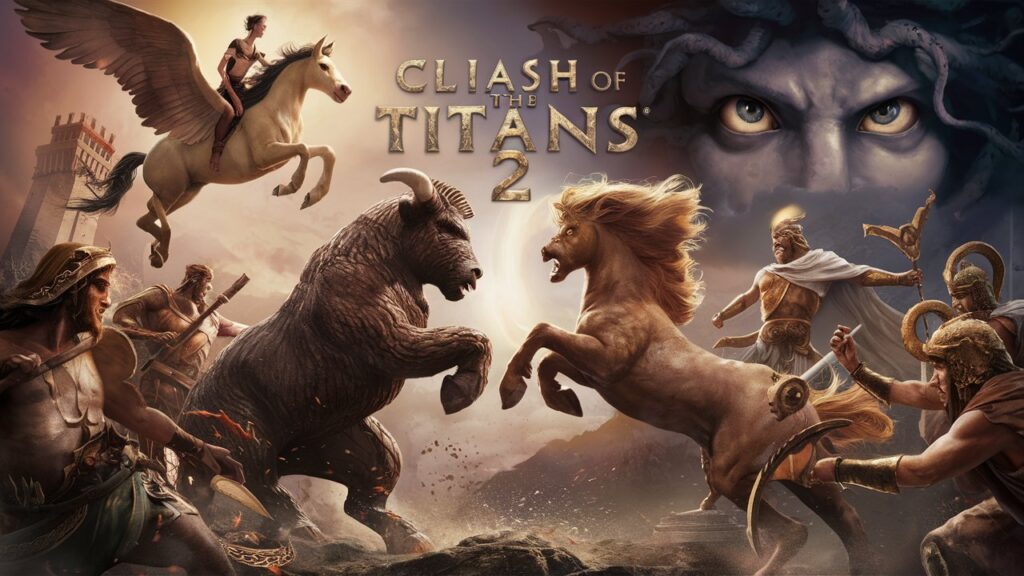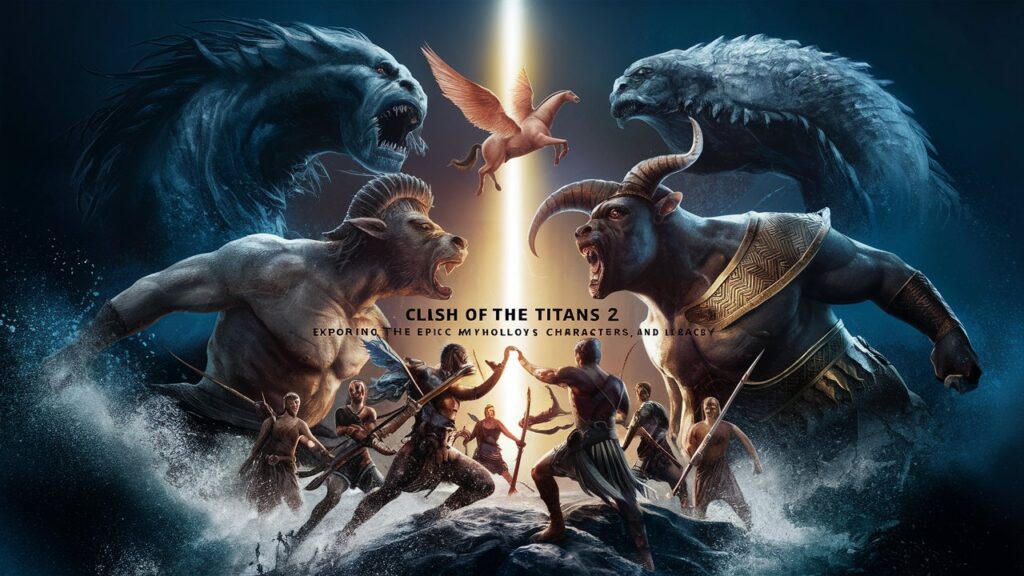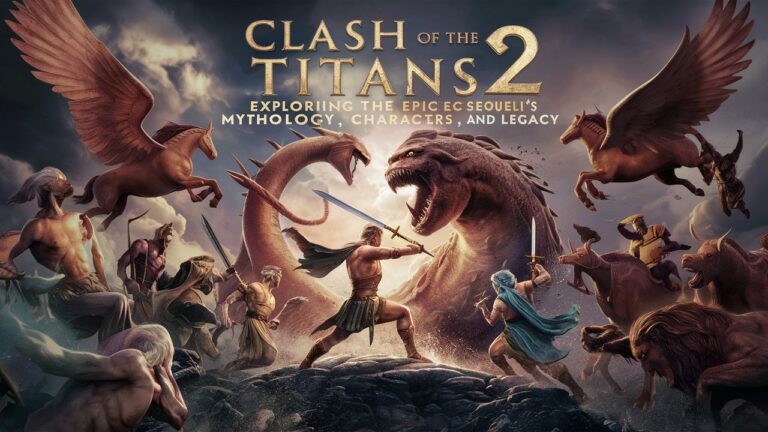Introduction:
The 2012 fantasy-adventure film Clash of the Titans 2, officially titled Wrath of the Titans, stormed into theaters as a sequel to the 2010 reboot of Clash of the Titans. Directed by Jonathan Liebesman and starring Sam Worthington, Liam Neeson, and Ralph Fiennes, the film delves deeper into Greek mythology, pitting heroes and gods against ancient titans in a battle for survival. While the sequel faced mixed reviews, its grandiose visuals, expanded lore, and relentless action cemented its place in the swords-and-sandals genre. This article unpacks the film’s mythological roots, character arcs, cinematic spectacle, and enduring legacy, while addressing burning questions fans still ask today.
1. The Plot of Clash of the Titans 2: A Battle for Divine Survival
Wrath of the Titans picks up a decade after the events of the first film. Perseus (Sam Worthington), now a humble fisherman, is thrust back into the world of gods and monsters when Zeus (Liam Neeson) reveals that the Titans—primordial deities imprisoned in Tartarus—are breaking free due to humanity’s fading faith in the Olympians. The weakening of the gods’ power allows Hades (Ralph Fiennes) and Ares (Édgar Ramírez) to orchestrate a coup, releasing the titan Kronos to destroy Olympus. Perseus reluctantly teams up with Queen Andromeda (Rosamund Pike) and Poseidon’s demigod son Agenor (Toby Kebbell) to retrieve the mythical weapons needed to defeat Kronos. The narrative weaves themes of family betrayal, redemption, and the cyclical nature of power, culminating in a visually explosive showdown between mortals, gods, and the titans.
2. Mythological Inspirations: Fact vs. Creative License
The film borrows heavily from Greek mythology but takes significant liberties for dramatic effect. Kronos, the leader of the Titans, is depicted as a lava-spewing colossus, whereas ancient myths describe him as a cunning usurper imprisoned by Zeus. The labyrinth of the underworld, a key setting in the film, draws loosely from the myth of Daedalus’ labyrinth but is reimagined as a shifting, booby-trapped prison. Characters like Agenor and Andromeda, though rooted in legend, are reworked to fit the sequel’s narrative—Agenor becomes a roguish sidekick, while Andromeda evolves from a damsel in distress to a warrior queen. These changes highlight Hollywood’s tendency to prioritize spectacle over strict mythological accuracy, yet they also make ancient stories accessible to modern audiences.
3. Character Development: Perseus, Zeus, and the Complexity of Godhood
Perseus’s journey in Wrath of the Titans focuses on his internal struggle to accept his divine heritage while protecting his mortal son, Helius. Unlike the first film, where he rejects his identity as Zeus’s son, here he learns to harness his godly strength without losing his humanity. Zeus, meanwhile, grapples with regret over his role in the gods’ decline, portraying a more vulnerable side to the king of Olympus. Hades, often vilified in myth, is humanized through his resentment toward Zeus and desperation to escape his role as ruler of the underworld. Even Ares, the god of war, is depicted as a petulant traitor driven by jealousy. These arcs explore the flawed, relatable nature of deities—a stark contrast to their often one-dimensional portrayals in classical myths.
4. Visual Effects and Cinematic Spectacle: Titans, Monsters, and the Art of Destruction
Wrath of the Titans doubled down on CGI-driven action, with Kronos’s emergence as a fiery giant standing out as a technical marvel. The labyrinth sequence, with its shifting walls and Minotaur cameo, showcases the film’s commitment to immersive worldbuilding. While critics argued that the relentless action overshadowed character development, the set pieces—like the Cyclops battle and the final confrontation with Kronos—deliver the adrenaline-pumping spectacle fans expected. The redesigns of classic creatures, such as the two-headed Chimera and the underworld’s multi-armed demons, demonstrate a willingness to innovate within the franchise’s aesthetic framework.

5. Critical Reception and Legacy: Why Clash of the Titans 2 Still Matters
The film grossed over $300 million worldwide but received tepid reviews, with critics citing a formulaic plot and excessive reliance on CGI. However, its exploration of familial discord among the gods and Perseus’s growth resonated with some audiences. Over time, Wrath of the Titans has gained a cult following for its earnest embrace of mythological chaos and its place in the early-2010s wave of fantasy reboots. Its legacy lies in pushing the boundaries of digital effects while reminding Hollywood of the risks of prioritizing style over substance.
Conclusion:
Clash of the Titans 2 may not have reached the heights of its predecessor, but its ambition to expand Greek mythology’s cinematic universe is undeniable. By blending myth with modern filmmaking, it offers a flawed yet fascinating glimpse into the struggles of gods and heroes. Whether viewed as a cautionary tale about sequels or a guilty pleasure, Wrath of the Titans remains a testament to the enduring allure of ancient legends reimagined for the big screen.
Frequently Asked Questions (FAQs)
Q1: How is Wrath of the Titans different from the first Clash of the Titans?
The sequel shifts focus from Perseus’s hero’s journey to the gods’ internal conflicts, with higher stakes and grander visuals. It introduces new characters like Agenor and emphasizes themes of familial reconciliation.
Q2: Are the Titans in the film accurate to Greek mythology?
Kronos and the Titans are inspired by myth but heavily stylized. The film exaggerates their size and power for dramatic effect, diverging from traditional depictions.

Q3: Why did the film receive mixed reviews?
Critics praised its visuals but criticized its thin plot and underdeveloped characters. The overuse of CGI was both a strength and a weakness.
Q4: Is there a post-credits scene teasing a sequel?
No, the film ends without a teaser, and plans for a third installment were shelved due to its lukewarm reception.
Q5: Can I watch Wrath of the Titans without seeing the first film?
While possible, viewing the first film provides context for Perseus’s relationships with Zeus, Andromeda, and his mortal identity.
This deep dive into Clash of the Titans 2 celebrates its triumphs and critiques its shortcomings, offering fans and newcomers alike a comprehensive look at this divisive yet ambitious sequel.
